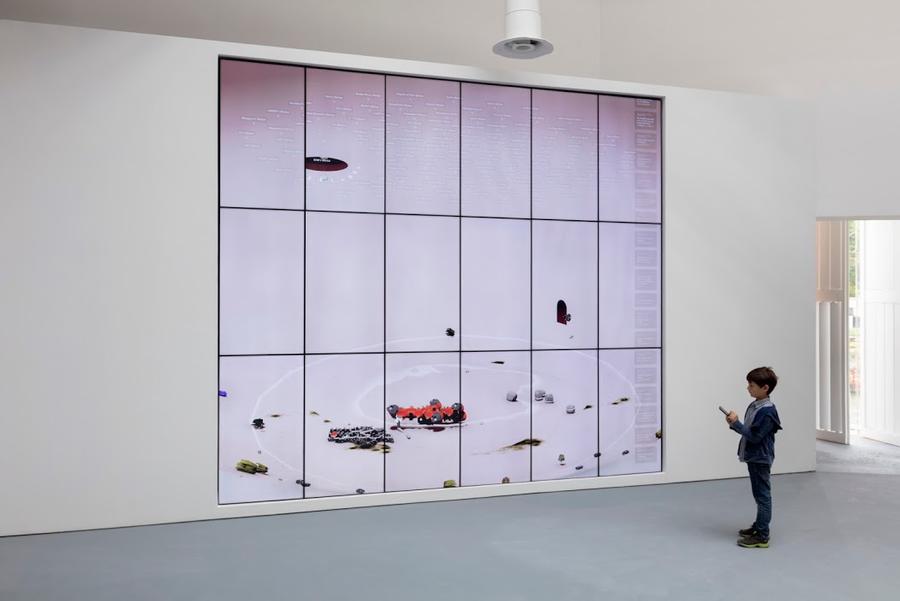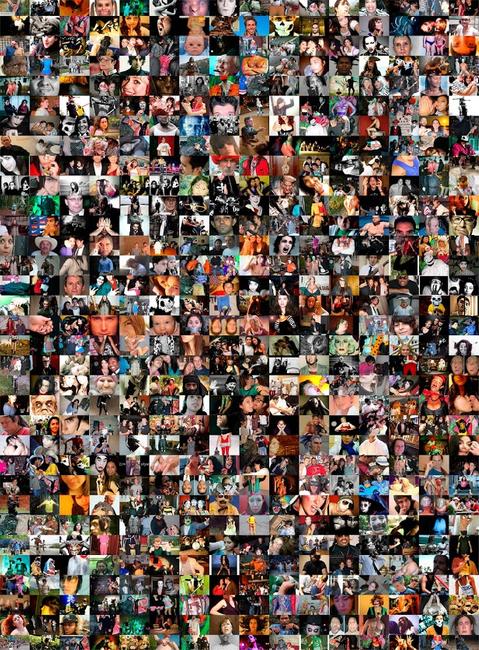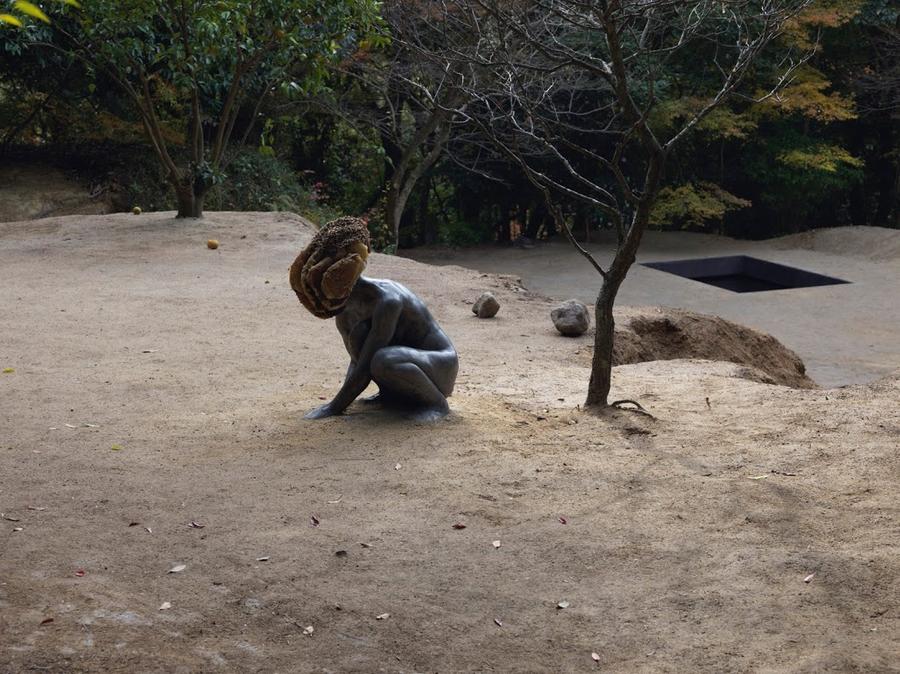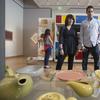Groundbreaking Exhibition 'Uncanny Valley: Being Human in the Age of AI' Opens in San Francisco This Winter
- SAN FRANCISCO, California
- /
- September 26, 2019

Uncanny Valley: Being Human in the Age of AI arrives as the first major exhibition in the US to explore the relationship between humans and intelligent machines through an artistic lens. Organized by the Fine Arts Museums of San Francisco, with the deYoung in San Francisco as its sole venue, Uncanny Valley: Being Human in the Age of AI will be on view from February 22 to October 25, 2020.
“Technology is changing our world, with artificial intelligence both a new frontier of possibility but also a development fraught with anxiety,” says Thomas P. Campbell, Director and CEO of the Fine Arts Museums of San Francisco. “Uncanny Valley: Being Human in the Age of AI brings artistic exploration of this tension to the ground zero of emerging technology, raising challenging questions about the future interface of human and machine.”

The exhibition, which extends through the first floor of the de Young and into the museum’s sculpture garden, will explore the current juncture through philosophical, political, and poetic questions and problems raised by AI. New and recent works by an intergenerational, international group of artists and activist collectives—including Zach Blas, Ian Cheng, Simon Denny, Stephanie Dinkins, Forensic Architecture, Lynn Hershman Leeson, Pierre Huyghe, Christopher Kulendran Thomas in collaboration with Annika Kuhlmann, Agnieszka Kurant, Lawrence Lek, Trevor Paglen, Hito Steyerl, and Martine Syms—will be presented.
The Uncanny Valley
In 1970 Japanese engineer Masahiro Mori introduced the concept of the “uncanny valley” as a terrain of existential uncertainty that humans experience when confronted with autonomous machines that mimic their physical and mental properties. An enduring metaphor for the uneasy relationship between human beings and lifelike robots or thinking machines, the uncanny valley and its edges have captured the popular imagination ever since. Over time, the rapid growth and affordability of computers, cloud infrastructure, online search engines, and data sets have fueled developments in machine learning that fundamentally alter our modes of existence, giving rise to a newly expanded uncanny valley.
“As our lives are increasingly organized and shaped by algorithms that track, collect, evaluate, and monetize our data, the uncanny valley has grown to encompass the invisible mechanisms of behavioral engineering and automation,” says Claudia Schmuckli, Curator in Charge of Contemporary Art and Programming at the Fine Arts Museums of San Francisco. “By paying close attention to the imminent and nuanced realities of AI’s possibilities and pitfalls, the artists in the exhibition seek to thicken the discourse around AI. Although fables like HBO’s sci-fi drama Westworld, or Spike Jonze’s feature film Her still populate the collective imagination with dystopian visions of a mechanized future, the artists in this exhibition treat such fictions as relics of a humanist tradition that has little relevance today.”

In Detail
Nestled within the museum’s garden, Pierre Huyghe presents Exomind (Deep Water), a sculpture of a crouched female nude with a live beehive as its head. With its buzzing colony pollinating the surrounding flora, it offers a poignant metaphor for the modeling of neural networks on the biological brain and an understanding of intelligence as grounded in natural forms and processes.
In the museum’s contemporary art galleries, Ian Cheng’s digitally simulated AI creature BOB (Bag of Beliefs) also reflects on the interdependency of carbon and silicon forms of intelligence. An algorithmic Tamagotchi, it is capable of evolution, but its growth, behavior, and personality are molded by online interaction with visitors who assume collective responsibility for its wellbeing. In A.A.I. (artificial artificial intelligence), an installation of multiple termite mounds of colored sand, gold, glitter and crystals, Agnieszka Kurant offers a vibrant critique of new AI economies, with online crowdsourcing marketplace platforms employing invisible armies of human labor at sub-minimum wages. Simon Denny also examines the intersection of labor, resources, and automation. Presenting 3-D prints and a cage-like sculpture based on an unrealized machine patent filed by Amazon, he literally casts human labor as the proverbial canary in the mine.
The City of Broken Windows, a video installation by Hito Steyerl, addresses the political risks of introducing machine learning into the social sphere. Including two short films—one featuring a group of software developers smashing windows to teach an algorithm how to recognize the sound of breaking glass, and another following a group of neighborhood activists through the South Side of Chicago as they work to keep decay at bay by replacing broken windows with paintings in abandoned homes—Steyerl stages a collision between commercial applications of AI in urban planning along with communal and artistic acts of resistance against gentrification.
A series of video works addresses and resists the perpetuation of societal bias and discrimination within AI. Trevor Paglen’s groundbreaking work with ImageNet, the world’s largest visual data training set, exposes the myth of objectivity within machine learning. From Apple to Anomaly assembles thousands of images according to their categorization, a task that is outsourced to Mechanical Turks, thus revealing both AI’s reliance on human labor and the problem of bias built into the process. Lynn Hershman Leeson’s new installation Shadow Stalker critiques the problematic reliance on algorithmic systems, such as the military forecasting tool Predpol now widely used for policing, that categorize individuals into preexisting and often false “embodied metrics.”
Stephanie Dinkins extends the inquiry into how value systems are built into AI and the construction of identity in Conversations with Bina48, examining the social robot’s (and by extension our society’s) coding of technology, race, gender and social equity. In the same territory, Martine Syms posits AI as a “shamespace” for misrepresentation. For Mythiccbeing she has created an avatar of herself that viewers can interact with through text messaging. But unlike service agents such as Siri and Alexa, who readily respond to questions and demands, Syms’s Mythiccbeing is a contrarious interlocutor, turning each interaction into an opportunity to voice personal observations and frustrations about racial inequality and social injustice.
Countering the abusive potential of machine learning, Forensic Architecture will pioneer their application to the pursuit of social justice. Their proposition of a Model Zoo marks the beginnings of a new research tool for civil society built of military vehicles, missile fragments, and bomb clouds—evidence of human-rights violations by states and militaries around the world. Christopher Kulendran Thomas’s and Annika Kuhlmann’s video Being Human poses the philosophical question of what it means to be human when machines are able to synthesize human understanding ever more convincingly. Set against the violent background of ethnic cleansing in Sri Lanka and the subsequent emergence of a contemporary art market, it employs AI-generated characters of singer Taylor Swift and business man Oscar Munoz to reflect on issues of individual authenticity, collective sovereignty, and the future of human rights.
Lawrence Lek’s sci-fi-inflected film Aidol, which explores the relationship between algorithmic automation and human creativity, projects this question into the future. It transports the viewer into the computer-generated “sinofuturist” world of the 2065 eSports Olympics: when the popular singer Diva enlists the super-intelligent Geomancer to help her stage her artistic comeback during the game’s halftime show, she unleashes an existential and philosophical battle that explodes the divide between humans and machines.
The Doors, a newly commissioned installation by Zach Blas, by contrast shines the spotlight back onto the present and on the culture and ethos of Silicon Valley as ground zero for the development of AI. Inspired by the ubiquity of enclosed gardens on tech campuses, he has created an artificial garden framed by a six-channel video projected on glass panes that convey a sense of algorithmic psychedelia aiming to open new “doors of perception.” While luring visitors into AI’s promises, it also asks what might become possible when such glass doors begin to crack.
Uncanny Valley: Being Human in the Age of AI is organized by Claudia Schmuckli, Curator in Charge of Contemporary Art and Programming at the Fine Arts Museums of San Francisco.















_-72dpi100x100_c.jpg)
